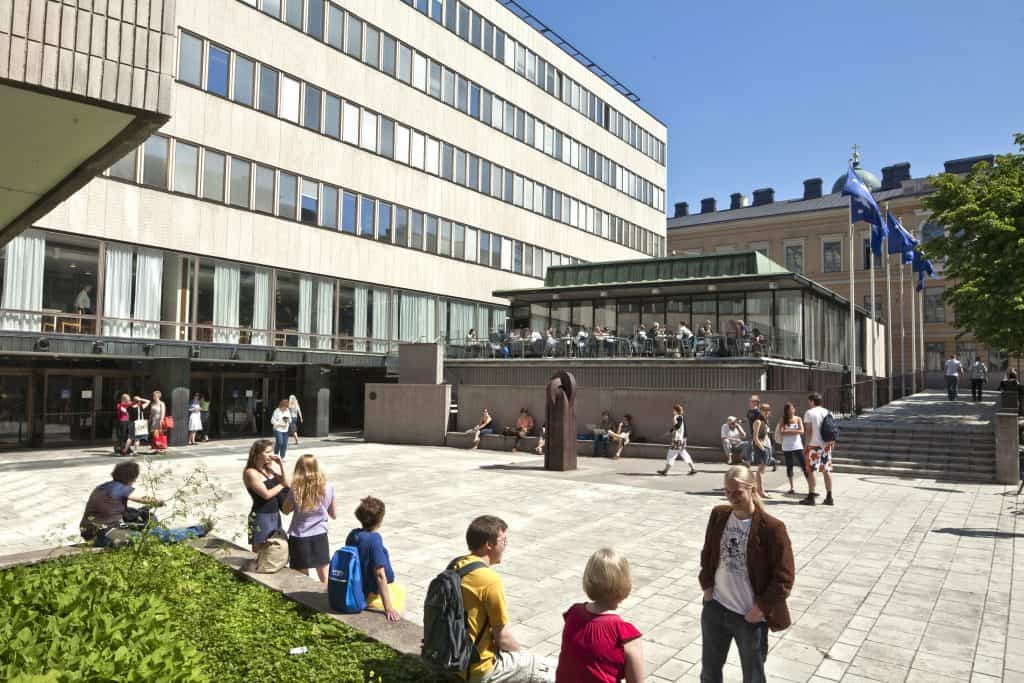Finland leading the way to… The era of precast concrete

Finland is one of the world’s leaders in modern concrete technology. The use of precast concrete elements began in the 1940s and became popular in the following decades.
The Pantheon in Rome is the oldest known concrete structure. However, concrete was not widely used in construction until the Paris world fair in 1900. Concrete had attracted attention during the preceding century, but the fair was a definite turning point.
In the early 20th century, industrialization in Finland required quick and efficient construction. Concrete became a popular material. Factories, roads, stadiums and, of course, housing were constructed using concrete.
After the Second World War, there was an incredible need for fast and cost-efficient housing construction. One of the most notable Finnish architects of the time, Aarne Ervi (1910 – 1977), understood the possibilities of precast concrete. Ervi designed the Porthania building of the University of Helsinki in 1949 using solely precast elements.
The dawn of Elematic
The spirit of the 1930s was strong in the aesthetics of the 1950s. The ideal of industrial construction was functionalism, with white, clean surfaces.
At the end of 1950s, two brothers – Pentti and Pauli Virtanen –were working in the metal industry but started to see a business opportunity in precast production technology. In 1959, they founded a company called Toijalan Teräsvalmiste, TTV, which later became Elematic. TTV started by manufacturing table molds for facades and wall elements.
The brothers were part of a trend as several precast factories were built around Finland in the early 1960s. The percentage of precast in all construction was 5% – 8% in 1962, rising to about 30% at the end of the decade.
In 1964, TTV received a big order from Haka, one of the biggest construction companies at the time in Finland. A complete precast plant – including a production system with moving molds and conveyor belt technology that was a first in Finland, was provided in 1965 – 66.
Building the suburbs
The late 1960s and the 1970s in particular saw people moving to urban areas in Finland on a large scale. Finnish cities were built incredibly fast, thanks to the development of the BES system for concrete construction.
The hollow-core slab became the standard floor solution, a position it retains today. Use of precast in floors, walls, frames and foundations got more and more popular, when the benefits of industrialized precast concrete construction were understood.
In the BES system, the elements and their connections were standardized, making it a lot easier and faster to design and build housing. This made a record-breaking pace of construction possible. Standardization continued in the 1980s
Worldwide success
Searching for new markets with niche expertise was Elematic’s strategy from early on. The company had its breakthrough in the Middle East already in the 1970s and operated in Russia in the 1980s.
At the end of 1980s, shear compaction for hollow-core slab production was introduced. It was an extruding innovation that changed the perception of precast quality overnight. Industrial design was fully integrated into product development, enhancing the usability and safety of machinery and production lines in the mid-90s.
The 1980s and 1990s brought variation to precast concrete structures, thanks to the evolving technology, increasing knowledge, and expertise. Construction companies paid more and more attention to the facades as well as to the environment.
Whereas precast elements were practically built by hand in the 1960s, automation and digitalization are leading developments in the new millennium. The production lines for hollow-core slabs and wall elements are automated and equipped with network connections and touch screens.
Today precast concrete is not only competing on expense and speed, but with quality, environmental awareness, versatility and looks as well.

”It was a whole new way of thinking. We now had production lines for wall elements – the molds moved while the people stayed where they were. Concrete was brought by track – we had to develop concrete transportation tracks. We also had vibration technology, as the molds had to be vibrated to ensure they were evenly filled. And then there was heat treatment. Our way was completely different from the prevailing ideas in Europe at that time,” Pentti Virtanen has described the innovation work that was done for the deal.